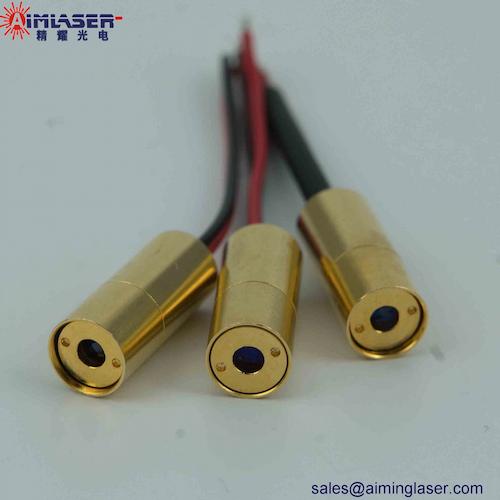The introduction of blue laser diode
A blue laser diode is a semiconductor laser that produces a concentrated photon beam with a wavelength of about 400 to 500 nanometers-the visible electromagnetic spectrum that the human eye perceives is blue or violet. Blue laser diodes are more difficult to manufacture than many other types of lasers, especially at higher power levels, but the short wavelength of blue light allows for higher accuracy. Today, blue laser diodes can be used in applications such as laser pointers and video projectors, as well as in devices that use high-definition discs (mostly in the Blu-ray format).
Like all laser diodes, the light of a blue laser diode is produced by pumping energy into a semiconductor. In laser diodes, this is done by current, which distinguishes them from optically pumped semiconductor lasers that use light. This causes the energy level of the electrons in the semiconductor material to rise briefly. When the electron returns to its original energy level again, the lost energy will be released in the form of photons, thereby producing light. Then, the light is collimated by the laser lens, and the generated photons are focused in one direction to produce a concentrated beam.
The color of the laser depends on the wavelength of the photon, which depends on the characteristics of the atoms or molecules that make up the gain medium. The most commonly used gain medium material for blue laser diodes is the crystalline semiconductor gallium nitride (GaN). Indium nitride (InN) and indium gallium nitride, an alloy of the two are also used.
The blue laser diode is the basis of several optical data storage formats, such as Blu-ray, China Blue High-Definition and HD DVD. All optical discs, such as CDs and DVDs, store information in the form of micro-indentations. When the disc is rotated in a disc player, the laser will read these indentations. CDs and DVDs use lasers that generate red light, which has a longer wavelength than blue light, and therefore requires a wider notch on the disc to read correctly. The shorter wavelength of blue light allows the blue laser to accurately read smaller features on the disk, which means more dents and therefore can contain more data on the same size disk. In this way, a disk designed to be read by a blue laser diode can pack about 25 GB of data into a single disk layer, which is more than five times the capacity of a DVD.
The blue laser diode is a relatively new and innovative technology that was not put into commercial use until 2001. This is due to the difficulty of producing suitable gain media and the need for advances in materials science before this technology becomes feasible. It is mainly the product of research conducted in Poland and Japan, the most famous being Japanese engineer and researcher Dr. Shuji Nakamura and Dr. Sylwester Porowski of the Polish Academy of Sciences.